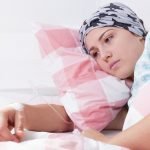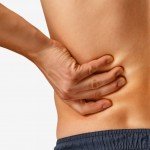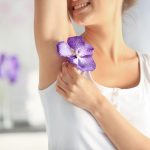Mast Cell Activation: Skin is Just Scratching the Surface
THALIA HALE, ND
Mast Cell Activation (MCA) is demanding awareness in functional medicine practices, especially among practitioners working with patients with chronic complex illnesses and infections such as chronic dysbiosis, Sick Building Syndrome, and Lyme disease and its associated infections.
MCA patients may appear complex in nature, as the syndrome affects multiple systems in the body; this can result in an array of seemingly unrelated symptoms. Fortunately, as naturopathic doctors we have a foundational understanding that the body is wholly connected.
The Role of Mast Cells in the Body
Mast cells (MCs) are a subset of our white blood cells derived from bone marrow. Upon leaving the bone marrow, MCs become a part of our body’s first line of defense. The highest concentrations of these cells are found in the skin, epithelial lining of the lungs, nasal passage, conjunctiva, and digestive tract. This positioning is key, as they predominate in the areas where our cells come into contact with the outside world.
If a harmful substance enters our environment, it is perceived as dangerous when the antigen attaches to the mast cell. This causes the basophilic granules within the mast cell to release histamine, heparin, inflammatory cytokines, and other mediators into the extracellular environment. The physiologic effects of histamine release by MCs include vasodilation, increased capillary permeability, bronchoconstriction, and smooth muscle contraction.1
Since first studied by Paul Ehrlich in 1878, MCs have primarily been considered part of our innate immune response and mostly involved in allergic and anaphylactic responses. But in the last 3 decades, further studies have revealed that our knowledge of these cells has been limited.1
Our MCs play a part in adaptive immunity by recognizing invaders such as viruses, fungi, parasites, and bacteria. They interact with a number of other immune cells to potentiate physiologic and immunologic responses to environmental changes.1
When MCs respond appropriately, they are immunomodulatory and support tissue healing, vascular homeostasis, angiogenesis, bone and tissue remodeling, and immune tolerance.1 When in a maladaptive state, however, MCs can inhibit Th1 immunity and shift a greater emphasis to Th2 immunity, resulting in patients feeling allergic, inflamed, and unable to respond adequately to chronic infections.
Mast Cell Activation
Overstimulation of MCs, which leads to a large release of histamine and inflammatory mediators, has been shown to contribute to chronic allergic/inflammatory disorders, autoimmune diseases, cardiovascular disease, and cancer.1 Dermatologic findings can be merely 1 clue to underlying immune and inflammatory dysregulation. This overstimulation of MCs can result in multi-systemic symptoms, including those listed in Table 1 (those accompanied by an asterisk are the most common manifestations of MCA that I see in practice).
Table 1. Manifestations of Mast Cell Activation
| Dermatologic Manifestations: Angioedema Dermatographia Dermatitis with pruritis Erythema Generalized pruritis* Hives* Hypersensitivity to insect bites* Skin flushing Sun sensitivity | Gastrointestinal Manifestations: Abdominal bloating* Abdominal cramping Constipation Diarrhea* Gastroesophageal reflux* Peptic ulcer disease Sensitivity to probiotics |
| Musculoskeletal Manifestations: Arthralgias Myalgias Osteoporosis | Cardiac/Pulmonary Manifestations: Heart palpitations* Hypotensive syncope/Near-syncope* Tachycardia Wheezing |
| Ear/Eyes/Nose/Throat Manifestations: Conjunctival injection Rhinitis, especially after meals* Sinus congestion | Endocrinologic Manifestations: Blood sugar instability* Fatigue Orthostatic hypotension* |
| Brain/Neurological Manifestations: Anxiety* Cognitive deficit/Brain fog Headaches* | Urinary Manifestations: Dysuria Polyuria* |
MCA has a number of comorbidities, including:
- Ehlers-Danlos Syndrome (EDS)2
- Electrohypersensitivity3,4
- Irritable Bowel Syndrome (IBS)5
- Inflammatory intestinal disorders5
- Periodontal disease6
- Postural Orthostatic Tachycardia Syndrome (POTS)2
- Sick Building Syndrome7-9
- Small Intestinal Bacterial Overgrowth (SIBO)10
The severity of symptoms depends on a number of factors, including the number of MCs involved in the reaction; the amount and type of allergen-specific IgE; the triggering allergen; the presence of triggering cofactors such as exercise, alcohol, or acetylsalicylic acid (aspirin); the presence of comorbidities; the tissue microenvironment; and the cytokines/chemokines involved.11
If your patient is complaining of many of the symptoms and conditions listed in Table 1, it is important to take MCA into account as a potential contributing diagnosis. There are 2 subclasses of Mast Cell Activation Syndrome (MCAS): primary (clonal) and secondary (nonclonal). For the purposes of this article, I will be focusing on secondary MCAS, which encompasses IgE-mediated, direct, and idiopathic MCA.12
Work-Up for MCAS
The likelihood of MCA being present is high when you 2 or more of the Table-1 symptoms are present and your patient is responsive to drugs that block MC mediator effects, mediator production, and/or mediator release.
The current minimal diagnostic criteria for MCAS, as of November 2020, are as follows11:
- Typical clinical symptoms indicative of multi-organ involvement, usually meeting the criteria for anaphylaxis
- Serum tryptase greater than 1.2 x baseline value + 2 ng/mL during a flare of symptoms is considered indicative of MCA and/or a clear increase in another mast cell-mediated marker
- Responsiveness to medications that manage MCA, mast cell mediator release, and/or mast cell mediator effects
Elevations in serum histamine and/or serum tryptase strongly support the diagnosis and the ability to use the marker(s) as a therapeutic guide. The challenge faced with random testing of serum histamine and tryptase is that these markers are extremely transient; thus, a normal value cannot rule out MCA.
Managing & Monitoring MCA
In our office, we focus on chronic diseases like Sick Building Syndrome and chronic infections like Lyme disease and its coinfections, gut dysbiosis, chronic viruses, and parasitosis. About 80% of our patients have some degree of MCA symptoms and often do not have elevated tryptase levels. Most of these patients have a number of associated symptoms (often without anaphylaxis) and elevated inflammatory markers and respond positively to mast cell treatment.
Treatment of MCA can be intense, as it most often requires strict dietary management and other lifestyle interventions in addition to pharmaceutical/nutraceutical interventions. In order to objectively assess the patient’s condition and help guide management and treatment of MCA, we have found the inflammatory marker Matrix Metaloproteinase-9 (MMP-9) to be very helpful.
MMP-9 is a key effector in immediate-type allergic reactions and is also well known to contribute to the pathogenesis of a variety of non-allergic inflammatory responses. This extracellular matrix-destructive enzyme is involved in tissue remodeling, embryonic development, wound healing, angiogenesis, and more. When improperly unleashed by mast cells, this enzyme sets up a cascade of inflammatory cytokines and chemokines (see Table 2 for interpretation of levels).13-15
Table 2. MMP-9 Interpretation
| MMP-9 Level (ng/mL) | Interpretation |
| 0-983 | Normal reference range |
| < 250 | Normal; mast cell activation unlikely |
| 250-399 | Consider mold and/or mast cell activation |
| >400 | Mast cell activation highly likely |
In an in-office study, we obtained MMP-9 values from 22 of our patients before and after a 3-4-week low-histamine diet and no MC stabilizers. After the diet trial alone, we observed a 39% decrease in MMP-9 levels. In addition, patients reported symptomatic improvement, including reductions in anxiety, fatigue, arthralgias, headaches, congestion, abdominal pain, loose stools, reflux, pruritis, and more.
Inflammatory markers can be elevated by numerous conditions, but being able to objectively show patients their progress has been imperative for treatment compliance.
Triggers for MCA
Whether based on symptoms and empiric treatment and/or lab work-up, one of the greatest challenges in treating patients with MCA is identifying and appropriately treating the triggers for their condition. As mentioned briefly above, pathogens and/or any harmful substances can trigger mast cells to become overstimulated.
Triggers to take into consideration include, but are not limited to, the following:
- Mold/Mycotoxins7-9
- Electromagnetic frequency (EMF) exposure3,4
- Impaired detoxification
- Methylation
- Glucuronidation
- Heavy metal exposure16
- Chemical/Pesticide exposure17
- Estrogen dominance18
- Viruses and retroviruses19
- Fungal infections20
- Parasitic infections19,21,22
- Bacterial infections19,20
- Dysbiosis via viruses/fungi/bacteria/parasites
- Mycoplasma pneumoniae
- Chlamydia pneumoniae
- Lyme disease and its associated infections
- Streptococcus species
- Emotional stress/Trauma23
- Limbic system impairment
- Vagus nerve impairment
Treatment for MCA
Dietary Interventions
Our office has observed that dietary intervention is the first step in managing patients with MCA. It is imperative for these patients to limit their exposure to additional histamine and triggers during the course of treatment.
There are 2 major rules for a low-histamine diet:
- Avoid high-histamine foods, including fermented foods
- Avoid leftovers
Leftovers and fermented foods allow naturally occurring bacteria to break down amino acids into histamine. Once histamine has been created within food, it can no longer be destroyed. We thus recommend that patients prepare their food immediately upon purchasing, and to freeze any leftovers for later consumption. Even food sitting in the refrigerator is susceptible to degradation.
Helpful guides are available, such as the “All I Can Eat” phone application, which may help people understand histamine levels in foods.
Other potential food triggers to consider include oxalates, lectins, and salicylates. For obvious reasons, most patients do not do well on a combination of more than 2 restricted diets, as it can become overwhelming, both mentally and physically. Patients limited to only a few tolerated foods often have other triggers that require attention, like limbic system and/or vagus nerve impairment, or mold.
Environmental/Lifestyle Interventions
As mentioned above, it is critically important to explore the triggers of a patient’s MCA and to address them in the necessary order. Outside of dietary intervention, various environmental and lifestyle factors may support a patient’s healing process:
- Reduction of EMFs3,4
- Inclusion of mindfulness, meditation, limbic system/vagus nerve support22
- Reduction of exposure to water-damaged buildings7-9
- Transitioning to organic foods17
- Addressing sources of heavy metals16
Pharmaceutical & Nutraceutical Interventions
Once we have addressed dietary, environmental, and lifestyle influences on one’s presentation of MCA, we then introduce pharmaceutical and/or nutraceutical support to further stabilize their condition. By focusing on the foundational components early on, we find that we need fewer MC stabilizers and can use lower doses effectively for management. Most of our patients are on 3-4 MC-stabilizing agents, including probiotic strains that reduce histamine levels.
Pharmaceuticals
Pharmaceuticals used in the management of MCA include18:
- 1st Generation H1 Anti-histamines
- Chlorpheniramine – mildly sedative: 1 daily with food
- Diphenhydramine – highly sedative: 1 daily if needed
- 2nd Generation H1 Anti-histamines
- Decreased central effects, resulting in less sedation
- Fexofenadine: 1 daily with food
- Loratadine: 1 daily with food
- Cetirizine: 1 daily with food
- Levocetirizine dihydrochloride: 1 daily with food
- Other Anti-histamine Support
- Selective H1 receptor inhibitor/Mast cell stabilizer – Ketotifen 1 mg (compounded): 1 daily with food
- Mast cell stabilizer – Cromolyn sodium (prescription/compounded): 100-200 mg 2-3 times daily, 5-10 minutes before meals
- H2 Anti-histamines (Rarely used in our practice due to long-term GI effects)
- Ranitidine
- Cimetidine
- Famotidine
Nutraceuticals
Nutraceuticals used in the management of MCA include:
- Quercetin, 250 mg: 2-3 times daily with food24
- Luteolin, 100 mg: 2-3 times daily with food25,26
- Curcumin, 200 mg: 1-2 times daily with food27,28
- Holy basil, 200-300 mg: 1-2 times daily with food29
- Pantethine, 450 mg: 1 twice weekly to every other day, with food30
- Fisetin: 1 cap 2 times daily31
- DAO, 600 µg: 2-3 times daily, 10-15 minutes before meals
- Homeopathic preparations of histamine: 1-3 drops 1-3 times daily, sublingually
Probiotics
Similar to SIBO patients, patients with MCA may have worsening symptoms when taking probiotics, and thus need specific strains to avoid aggravating histamine levels.
Probiotic strains to avoid in MCA:
Lactobacillus bulgaricus
Lactobacillus casei
Lactobacillus reuteri
Streptococcus thermophilus
Histamine-neutral strains:
Lactobacillus acidophilus
Lactobacillus lactis
Lactococcus lactis
Probiotic strains supportive of MCA:
Soil-based probiotics
Bifidobacterium infantis
Bifidobacterium longum
Lactobacillus gasseri
Lactobacillus rhamnosus
Lactobacillus plantarum
Lactobacillus salivarius
Summary
The unfortunate truth is that our environment has become increasingly toxic. Because mast cell activation can impact so many different organ systems and functions, the assessment and treatment of MCA has become a cornerstone in our treatment of chronic and complex patients. By reducing immune and inflammatory overexpression via specific dietary and lifestyle interventions, identification of MCA triggers, and the use of targeted nutraceuticals and probiotics, we are able to adequately address MCA and restore optimal health in our patients.
References:
- da Silva EZ, Jamur MC, Oliver C. Mast cell function: a new vision of an old cell. J Histochem Cytochem. 2014;62(10):698-738.
- Bonamichi-Santos R, Yoshimi-Kanamori K, Giavina-Bianchi P, Aun MV. Association of Postural Tachycardia Syndrome and Ehlers-Danlos Syndrome with Mast Cell Activation Disorders. Immunol Allergy Clin North Am. 2018;38(3):497-504.
- Rajkovic V, Matavulj M, Johansson O. Histological characteristics of cutaneous and thyroid mast cell populations in male rats exposed to power-frequency electromagnetic fields. Int J Radiat Biol. 2005;81(7):491-499.
- Gangi S, Johanssen O. A theoretical model based on mast cells and histamine to explain the recently proclaimed sensitivity to electric and/or magnetic fields in humans. Med Hypotheses. 2000;54(4):663-671.
- Hsieh FH. Gastrointestinal Involvement in Mast Cell Activation Disorders. Immunol Allergy Clin North Am. 2018;38(3):429-441.
- Palaska I, Gagari E, Theoharides TC. The effects of P. gingivalis and E. coli LPS on the expression of proinflammatory mediators in human mast cells and their relevance to periodontal disease. J Biol Regul Homeost Agents. 2016;30(3):655-664.
- Kritas SK, Gallenga CE, D Ovidio C, et al. Impact of mold on mast cell-cytokine immune response. J Biol Homeost Agents. 2018;32(4):763-768.
- Urb M, Pouliot P, Gravelat FN, et al. Aspergillus fumigatus induces immunoglobulin-E-independent mast cell degranulation. J Infect Dis. 2009;200(3):464-472.
- Ratnaseelan AM, Tsilioni I, Theoharides TC. Effects of Mycotoxins on Neuropsychiatric Symptoms and Immune Processes. Clin Ther. 2018;40(6):903-917.
- Weinstock LB, Rezaie A, Brook JB, et al. Small Intestinal Bacterial Overgrowth is Common in Mast Cell Activation Syndrome. J Med – Clin Res & Rev. 2020;4(8):1-13. Available at: https://scivisionpub.com/pdfs/small-intestinal-bacterial-overgrowth-is-common-in-mast-cell-activation-syndrome-1371.pdf. Accessed January 25, 2021.
- Valent P, Akin C, Nedoszytko B, et al. Diagnosis, Classification and Management of Mast Cell Activation Syndromes (MCAS) in the Era of Personalized Medicine. Int J Mol Sci. 2020;21(23):9030.
- Weiler CR. Mast Cell Activation Syndrome: Tools for Diagnosis and Differential Diagnosis. J Allergy Clin Immunol Pract. 2020;8(2):498-506.
- Kanbe N, Tanaka A, Kanbe M, et al. Human mast cells produce matrix metalloproteinase 9. Eur J Immunol. 1999;29(8):2645-2649.
- Xu L, Cai Z, Yang F, Chen M. Activation-Induced upregulation of MMP-9 in mast cells is a positive feedback loop mediator for mast cell activation. Mol Med Rep. 2017;15(4):1759-1764.
- Baram D, Vaday GG, Salamon P, et al. Human mast cells release metalloproteinase-9 on contact with activated T cells: juxtacrine regulation by TNF-alpha. J Immunol. 2001;167(7):4008-4016.
- Kempuraj D, Asadi S, Zhang B, et al. Mercury induces inflammatory mediator release from human mast cells. J Neuroinflammation. 2010;7:20.
- Kumar S, Khodoun M, Kettleson EM, et al. Glyphosate-rich air samples induce IL-33, TSLP and generate IL-13 dependent airway inflammation. Toxicology. 2014;325:42-51.
- Castells M, Butterfield J. Mast Cell Activation Syndrome and Mastocytosis: Initial Treatment Options and Long Term Management. J Allergy Clin Immunol Pract. 2019;7(4):1097-1106.
- Shariati A, Fallah F, Pormohammad A, et al. The possible role of bacteria, viruses, and parasites in initiation and exacerbation of irritable bowel syndrome. J Cell Physiol. 2019;234(6):8550-8569.
- Pilponsky AM, Romani L. The contribution of mast cells to bacterial and fungal immunity. Immunol Rev. 2018;282(1):188-197.
- Inclan-Rico JM, Siracusa MC. First Responders: Innate Immunity to Helmiths. Trends Parasitol. 2018;34(10):861-880.
- Bosmans G, Appeltans I, Stakenborg N, et al. Vagus nerve stimulation dampens intestinal inflammation in a murine model of experimental food allergy. Allergy. 2019;74(9):1748-1759.
- Jonassen F, Granerus G, Wetterqvist H. Histamine metabolism during the menstrual cycle. Acta Obstet Gynecol Scand. 1976;55(4):297-304.
- Weng Z, Zhang B, Asadi S, et al. Quercetin is more effective than cromolyn in blocking human mast cell cytokine release and inhibits contact dermatitis and photosensitivity in humans. PLoS One. 2012;7(3):e33805.
- Kritas SK, Saggini A, Varvara G, et al. Luteolin inhibits mast cell-mediated allergic inflammation. J Biol Regul Homeost Agents. 2013;27(4):955-959.
- Liu H, Zeng Z, Wang S, et al. Main components of pomegranate, ellagic acid and luteolin, inhibits metastasis of ovarian cancer by down-regulating MMP2 and MMP9. Cancer Biol Ther. 2017;18(12):990-999.
- Kinney SR, Carlson L, Ser-Dolansky J, et al. Curcumin Ingestion Inhibits Mastocytosis and Suppresses Anaphylaxis in a Murine Model of Food Allergy. PLoS One. 2015;10(7):e0132467.
- Bosca AB, Ilea A, Sorițău O, et al. Modulatory effect of curcumin analogs on the activation of metalloproteinases in human periodontal stem cells. Eur J Oral Sci. 2019;127(4):304-312.
- Mediratta PK, Sharma KK, Singh S. Evaluation of immunomodulatory potential of Ocimum sanctum seed oil and its potential mechanism of action. J Ethnopharmacol. 2002;80(1):15-20.
- Abou-Hamdan M, Gharib B, Bajenoff M, et al. Pantethine Down-Regulates Leukocyte Recruitment and Inflammatory Parameters in a Mouse Model of Allergic Airway Inflammation. Med Sci Monit Basic Res. 2017;23:368-372.
- Nagai K, Takahashi Y, Mikami I, et al. The hydroxyflavone, fisetin, suppresses mast cell activation induced by interaction with activated T cell membranes. Br J Pharmacol. 2009;158(3):907-919.

Thalia Hale, ND is a naturopathic doctor in the San Francisco Bay Area. Dr Hale has been practicing 10 years. Treating chronic digestive and hormonal conditions led her to specialize in chronic complex patients presenting with mast cell activation, mold-related illness, and Lyme disease and its coinfections.










